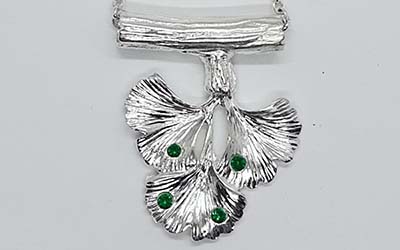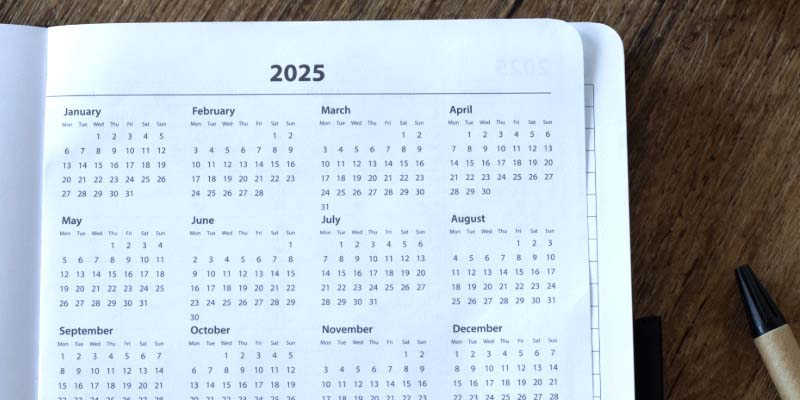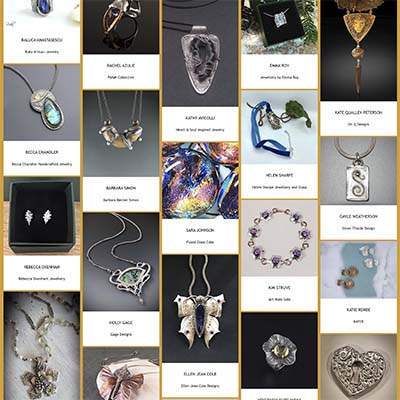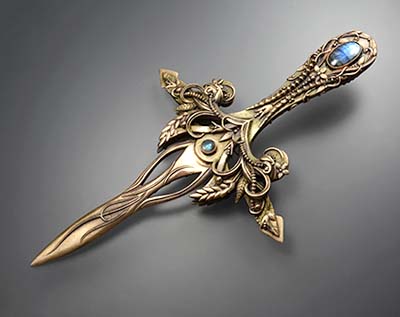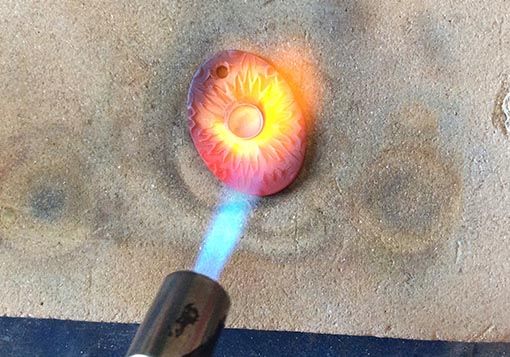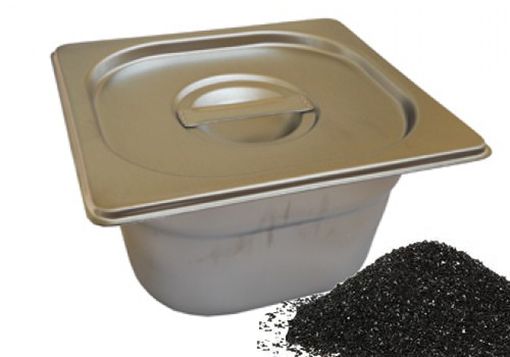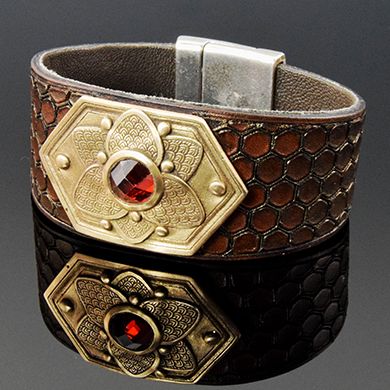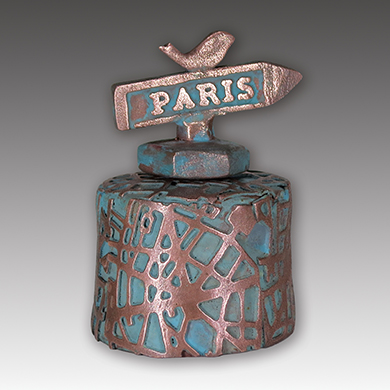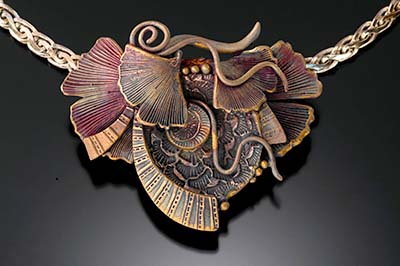Kiln Firing Base Clay
The most common practice for firing base metal clays is a two-stage firing using first an open shelf and then covered in activated charcoal inside a stainless steel or ceramic container placed in a kiln. Each manufacturer is a little bit different in their firing schedules, but they can be boiled down to a simple formula.
First firing (open shelf)
This is similar to the way silver is fired, pieces laid out without touching and fired with a slow ramp to between 650˚F /343˚C and 900˚F /482˚C, with a short hold, perhaps 30 minutes. Let the pieces cool before handling. The object of this firing is to burn off the binder in the clay. Pieces are fragile after this firing and should be transferred with great care to the carbon for the second firing. Note: pieces will catch on fire during this process. Do not open the kiln door.
Second firing (carbon)
Place approximately an inch in the bottom of the container. Gently place pieces from the first firing on the carbon, nestling pieces like lentils or domed pieces so that they are supported. Sift carbon over the top of the pieces until they are covered by about an inch. Place the lid on the firing container and place it in the kiln elevated on feet so that air can circulate around the container. Make sure the thermocouple is not touching the box. Ramp and hold according to instructions to the top temperature specified with that brand of clay and let cool in the carbon down to room temperature. The carbon binds the oxygen molecules, remember, so pulling pieces out before cooling will allow oxygen to start firescale. Note: the carbon catches on fire as well, be careful not to open the kiln door during the firing process.
Alternative Methods of Firing
Open Shelf Kiln Firing
This technique uses either the firing shelf or a stainless mesh grid, elevated slightly in the kiln to enable heat to circulate freely. Generally, one piece of clay at a time can be successful. Care must be taken to ensure safety since the shelf is placed in a hot (1500˚F / 815˚C – 1800˚F /982˚C) kiln, and then timed much in the same way as enameling. Remove quickly and dump the piece into a container of water to quench. Most of the firescale will pop off at the moment of quenching.
Single Stage Carbon Firing
This is the original technique for firing the earliest bronze clays. One problem is that the binder does not have a chance to burn off completely while covered with charcoal. Several one-fire clays are currently on the market, which include instructions for ramping to particular temperatures, holding, then continuing to ramp to higher temperatures. The advantage is that the container is only touched once, disadvantages include that not as much clay can be successfully fired at one time.
Torch Firing
Some clays come with instructions for this technique. A good deal of practice is required to be consistently successful, however, the size and shape of pieces are limited. Some clays do suggest using a torch to burn off the binder. This is much quicker than the open shelf method but does require some patience or pieces can be fired too far into the process.


